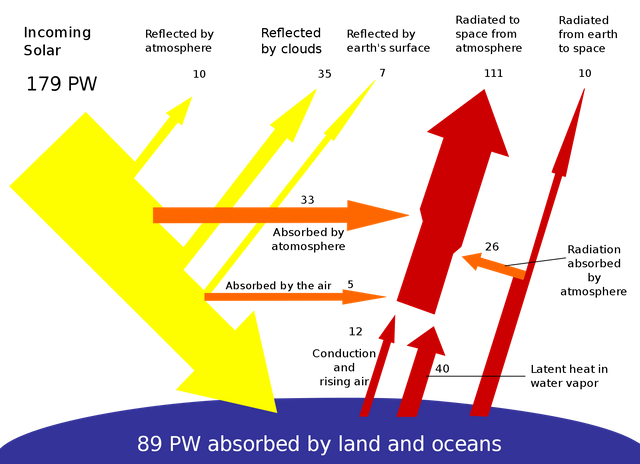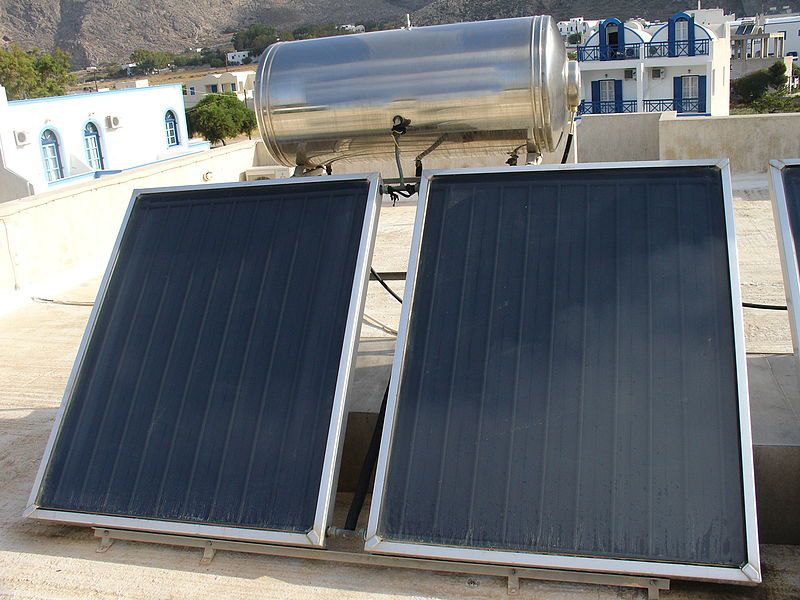Solar energy arrives the earth in the form of electromagnetic radiation. And it covers a wide range of energies and wavelengths. Sun's energy distribution as a function of wavelength is very important in the functioning of solar energy collectors.
The origin of solar energy dates as far back as the creation of the humankind and its importance as a major source of energy has been recognised for many years. During the time of Archimedes between (287-212 BC) he repelled the invading Roman fleet of Marcellus by burning their fleet by means of solar rays. And this action triggered off many researches in the area of solar energy leading to a good number of inventions like the invention of a solar motor by Solomon de Cann in 1615, and the solar energy furnace by Georgy Louis Buffon.
The first experiments in which solar energy was used to provide heat inside a vacuum enclosure were made in Germany by stock and Heyenemann in the nineteenth century. Between 1864 and 1878, August Monchot pioneered the research work destined to convert solar energy into other forms of energy. Both of them constructed and operated several solar powered steam engines. Later in 1875 Monchot designed a solar collector in form of a truncated cone called Axicon. Axicon focussed light uniformly along the axis of the cone such that a tube could be used as an absorbing surface.

Wikimedia commonsBreakdown of the incoming solar energy
Towards early 1970's J. Hardin designed a solar energy powered water distillation unit. Between the years 1893 and 1909, M.L Severy worked on the possibility of combining solar steam powered devices and storage batteries for possible power systems. John Boyle during the period 1902 - 1918 instead of the mirror reflector to concentrate light, used the flat plate collector opened the gate for the study and exploitation of the abundant solar energy resources.
The solar energy flux varies with altitude of the point of observation. It increases as the latitude of the point of observation increases. This results from the reduction in aerosol scattering and gross dust absorption from the urban atmosphere.
The geometrical distribution of the sun shows that the sunniest regions lie in two latitude bands, 20-30°N and 20-30°S. These regions are regions of atmospheric subsidence. The dry descending air results in few clouds and sparse rainfall most of the year. In my country Nigeria lying between latitude 4°N and 18°N is blessed with abundant sunshine and annual mean value falling on horizontal surface is 1700Kwh/m2.
TWO TYPES OF SOLAR ENERGY COLLECTORS
The proper utilization of solar energy demands that the solar energy be collected and conveyed to the absorber where it is converted to either electrons or photons. And these two collectors differs in their mode of interaction with radiaton.
1. CONCENTRATING COLLECTORS: This focuses the incident flux on a receiver having an aperture smaller than the collector aperture. This increases the concentration of flux on the receiver. The concentrating collector depends on the intensity the collector. It cannot diffuse light from the sky.
2. FLAT PLATE COLLECTOR: This is purely an absorber of photons. These photons are converted into heat photon. It is non directional, that is any photon arriving from any direction is absorbed.Thus flat plate collectors absorbs energy from the sky, environment as well as the sun. It is insensitive to sky conditions and depends only on the total irradiation upon the absorbing surface.
Basically flat plate collectors consists of different main components.
- The container which encloses all the components protecting them from weather
- The passages or channels through which air, water or other fluid passes
- The absorber plate which is a metal with a blackened surface.
- The transparent cover, often called the window, which provides thermal protection for the absorber and also keeps dirt and rain from the blackened surface. If the window is opaque to infrared e.g glass, it increases the temperature of the absorber through the green-house effect.

Wikimedia CommonsFlat plate thermal water heater
SOME POSSIBLE APPLICATION OF SOLAR ENERGY
- WATER DISTILLATION : Solar energy could be used for water distillation. In this case a shallow level of water is contained in an enclosure having a transparent window. This window being exposed to the atmosphere is cooler than the air inside the enclosure. The water which is enclosed in the container is also warmer than the enclosed air and also the window. Since the water is warmer than the air enclosed, the vapour pressure of this water will tend to saturate the air contained in the enclosure at equilibrium with the water temperature.
The window, on the other hand being cooler than the air enclosed, will tend to limit the saturation of the air to that appropriate to the temperature of the window. This then results in a net transfer of water from the hot water to the cool window.
- SOLAR ENERGY AIR CONDITIONING AND REFRIGERATION.
The advantage of solar energy is available at the time of highest demand which is during the early Afternoon. Solar air conditioning and refrigeration will have important applications especially in the preservation of agricultural products, biological and medical materials and in the protection of laboratory equipment designed to operate at temperature of not more than 25°C.

Wikimedia CommonsSolar powered refrigerator
PHOTOVOLTAIC SOLAR SYSTEM
A photovoltaic solar cell is usually a thin wafer of silicon, gallium arsenide, cadmium sulphide or cadmium telluride having an area of a few square centimeters. Photovoltaic have the property of producing voltage and current when light strikes the surface of the cell. The effect was discovered by Alexander E. Becquerel(1839)when he observed a voltage of 0.1volts when light was shone on one of a pair of different electrodes immersed in an electrolyte. In 1876, R.E Day and W.G Adams observed photovoltaic effects in semi conductor sellenium. Since then more and more work are being done in this area and in 1954, P. Rappaport, first suggested that silicon could be used as a source of power. Pearson made a silicon photovoltaic cell capable of converting sunlight to electricity.

Wikimedia CommonsA photovoltaik Zugspitze
REFERENCES
Radiant flux
About the solar flux data
Photovoltaic system
Solar Energy
Solar power


Congratulations @edwin10! You have completed some achievement on Steemit and have been rewarded with new badge(s) :
Click on any badge to view your own Board of Honor on SteemitBoard.
To support your work, I also upvoted your post!
For more information about SteemitBoard, click here
If you no longer want to receive notifications, reply to this comment with the word
STOPDownvoting a post can decrease pending rewards and make it less visible. Common reasons:
Submit